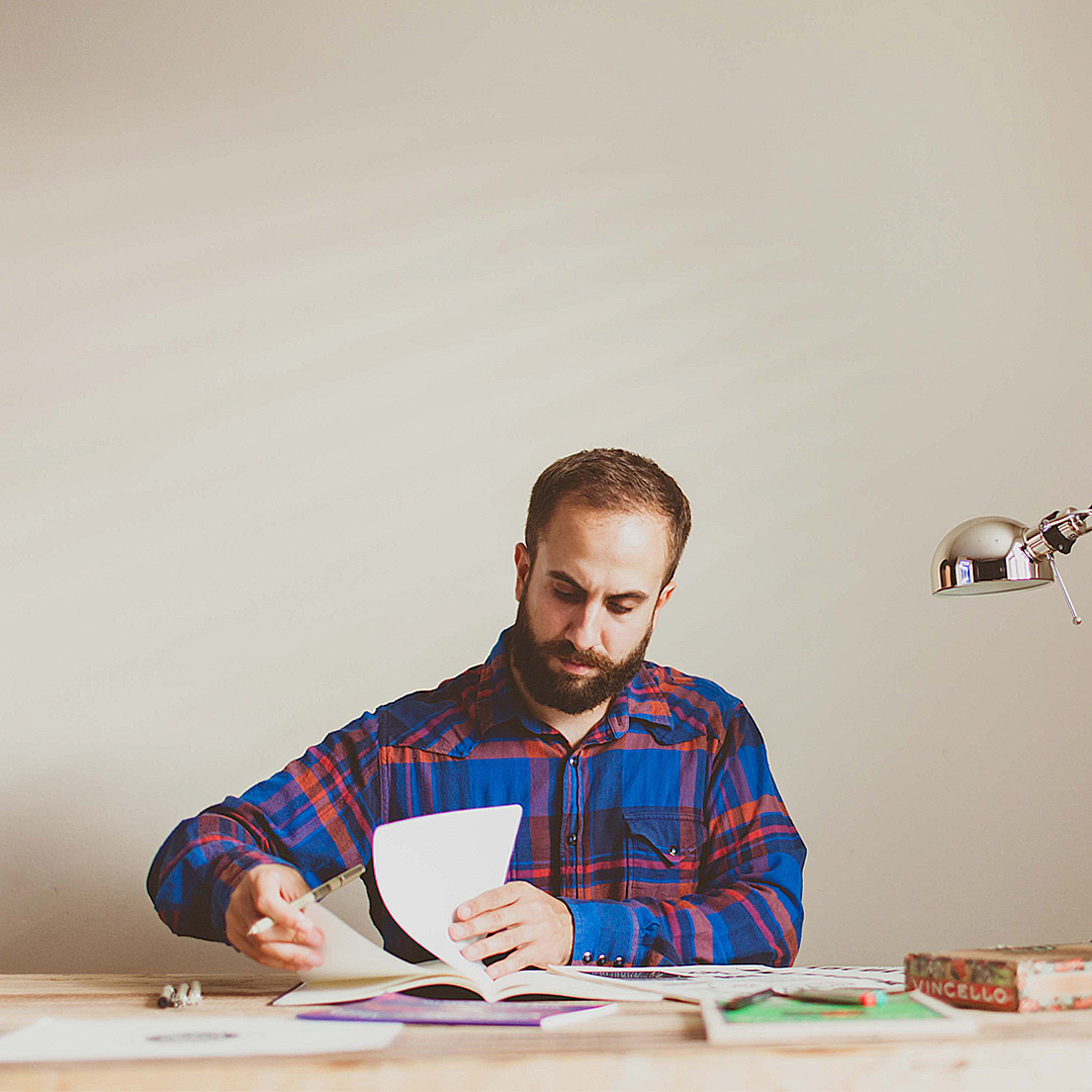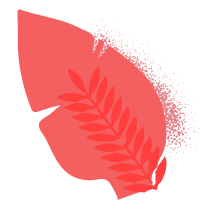
Inside Steve Wolf and his Creative Agency
Based in Austin, Steve Wolf works as a designer and illustrator whose work effortlessly conveys simplicity and sophistication. Steve’s unique style blends vintage-inspired design, modern elements and just the right amount of whimsy in a way that makes brands smart and fun.
The trick is to treat the freelance work as a passion project instead of work. You will enjoy working on the outside work so much that you want to do more and more. Another recommendation is to try to find a balance between agency work, freelance work, and relaxation. Without taking a break here and there, you will get burned out really fast and end up going one way or the other.
Steve Wolf, studying Industrial Design in College also studied the Bauhaus movement. By the time he fully made the transition into obtaining his degree in Graphic Design, there were elements that converted with him. In his work you can see the emphasis in his line weights, simplicity in his layouts, clean and uncluttered shapes and stylized nature within his geometric patterns and textures.
If you’re a design student there are usually classes that are mandatory to take. Studying the Bauhaus movement and the Mid Century design era in art history class was something that many designers can relate to passing (or failing). The Bauhaus movement included distinction between fine and applied arts in efforts to reunite creativity and manufacturing. It was founded with the idea of all arts, including architecture, and would eventually be brought together giving an holistic approach to design and shedding light on why one begins to create.
Steve Wolf, born and raised in Central Nebraska continues to practice graphic arts professionally, winning awards such as Austin ADDY and ADDY Silver. Steve Wolf Designs, a sophisticated illustration and design agency has grown from his talents. Moving to the big city in Austin, Texas, he continues his practice as design director, business developer, accountant and all in one design man. You can see a detailed and vintage approach to his portfolio including a more recent project where he designed for the Adobe Live series, "I designed live for two hours over three days. It was definitely a challenge but I had a lot of fun". We sit down with Steve and discuss the next generation of talent, how he began his creative journey and what advice he can give to the next graphic prodigy.


Let’s start with your story, How did you begin your creative journey? I actually wanted to be an Industrial Designer during high school and when I went off to college in Nebraska. In college, I took a lot of fine art classes such as drawing and painting because I have always loved making art my whole life and wanted to continue practicing this craft. One day, my college professor stopped me in the hall and invited me to a graphic design meeting. I went with no expectations or any knowledge of graphic design. After hearing all of the possibilities graphic design had to offer, I instantly fell in love and knew this was actually the path I was looking for all along! I graduated with a degree in graphic design and have been in this field for roughly 8 years now.

Who or what influenced your beginning designs? Our design program in college focused on the classic heavyweight designers during the Bauhaus movement and up to the mid century design era. Paul Rand, Saul Bass, Ikko Tanaka, Lance Wyman and Alvin Lustig where some of the designers we studied that really inspired me to do the design work I do today. I wanted to be just like them so I would stay up late every other night reading and researching about these guys until I started to develop my own style based off of these legends.
Did you work for anyone prior starting your venture? Yes, I worked at a sports trading card company in Dallas called Panini America, a marketing agency in Nebraska called SCORR marketing, and an advertising company in Austin called GSD&M.
Did you have co-founders, where they other designer’s, and how did you split up the roles, who does what? My wife Danielle helped me from the very beginning with contracts, client communication and emails. She helped me on the business side of things while I focused on design. Within the past year, we have added another member to the team who helps with business management.
How do you measure your success, what is the criterion you measure? I measure my success based on how I feel about my work. If I can see that I am improving my ideas and execution, I see that as growth. I am always trying out new ideas and processes so when I am able to implement these into my work and see them live in the world, I see that as success.
What does it mean to be a creative leader? First off, becoming a creative leader is not typically something you can expect from someone without practice and hard work, but it is a skill which can, and should, learn. Creative leaders are not afraid to ask questions about why things are the way they are, they are not afraid to try new techniques and break away from the norm, they push the boundaries of what has already been done, and they are steady and self-assured. They see new problems as a challenge to overcome and an opportunity to create something unique that could influence and inspire people.

Okay, walk me through a design process. Where do you start? I first start off by getting as much information about the project I am working on from the client and I also learn about the client and get to know them on a personal level. Understanding the clients is just as important as understanding the project. Each person is different and has their own vision and needs. After discussing the project, I spend long periods of time researching. This includes reading books, getting on Pinterest and other design boards, learning about the genre I am working in, seeing what has been done before, scouting out competitors and seeing their executions, and getting inspiration from everyday things such as nature and architecture.
After the research phase, I start sketching or in some cases go directly onto the computer depending on the project. I start to bring the ideas to life on the computer and go through many options before narrowing it down to two or three. Once the final directions are established, I present them to the client. I will make changes to the design if needed and once approved, I send over the final files. Throughout all of this, I am constantly talking to my clients and I keep researching even when I am designing.


With the advent of publishing platforms and social media, what is your go to for sharing? I always post my work to Instagram and have found the most success through this platform. I also use Pinterest, Dribbble, and Behance to share my work.
On that topic, have you found with the increase of creatives out there and the diversity of other's portfolios, has it been difficult in getting your work out there? I don’t think so. As long as you stay true to what you make and keep improving, your work will get noticed and stand out from the rest even though there are many sites out there. Coming up with original ideas for a unique style can really help you stand out from the crowd.
Have you experienced any challenges with landing clients? When I first started out, I would go through long periods without any clients. When this happened, I used this time to develop my style and work on personal projects. The more I designed and shared my work, I slowly got a steady stream of clients to work with. After I landed a few clients, I was able to build off of that for the next opportunity. Now, I am able to get a steady stream of opportunities.

What other creatives do you look up too, who is your motivational creative influence? Like I said earlier, the great designers such as Paul Rand and Saul Bass are still influencing me still to this day! It amazes me that their work is still relevant and ground breaking even in today’s world.
Any recommendations for those who choose the agency scene and eventually look to break out? Grind, Grind, Grind. I did this for over two years and learned that patience and hard work is key. It will be the hardest thing you have ever done but it can definitely be worth it in the long run. During your transition, it gets tough to balance both. After your job at the agency, you come straight home to work even more! The trick is to treat the freelance work as a passion project instead of work. You will enjoy working on the outside work so much that you want to do more and more. Another recommendation is to try to find a balance between agency work, freelance work, and relaxation. Without taking a break here and there, you will get burned out really fast and end up going one way or the other.




